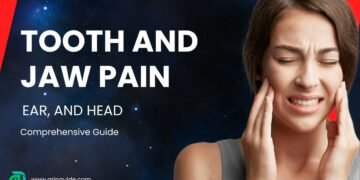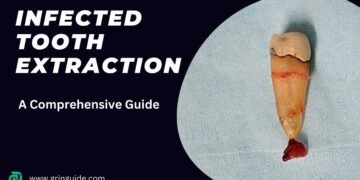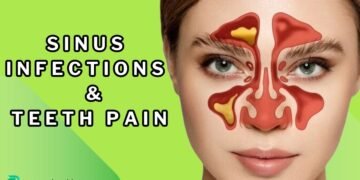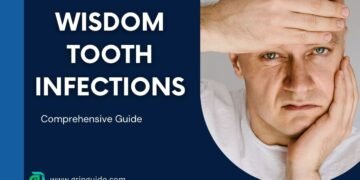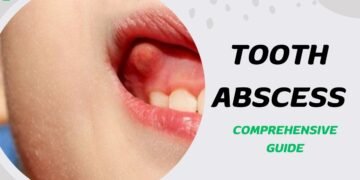Table of Contents
Introduction
Throbbing tooth pain is a common yet particularly distressing dental issue that can significantly affect an individual’s quality of life. Characterized by a pulsating or rhythmic discomfort in or around a tooth, this type of pain often signals an underlying problem that requires prompt attention. The severity and persistence of the pain can interfere with daily activities such as eating, speaking, and even sleeping, making it essential to understand its root causes and potential implications.
The sensation of throbbing within a tooth generally indicates inflammation or infection in the dental pulp—the innermost part of the tooth containing nerves and blood vessels. This can be triggered by various factors including tooth decay, gum disease, or a cracked tooth, among others. Recognizing the symptoms and seeking timely dental consultation is crucial in mitigating further complications and ensuring effective treatment.
Understanding throbbing tooth pain is vital not only for addressing the immediate discomfort but also for preventing long-term dental issues. Ignoring such pain can lead to more severe conditions, potentially resulting in tooth loss or systemic infections that can adversely affect overall health. Therefore, a proactive approach in identifying and addressing the causes of throbbing tooth pain can significantly enhance oral health and overall well-being.
Throbbing Tooth Pain After Crown
Throbbing tooth pain following the placement of a dental crown is a common concern that can stem from several underlying issues. One primary cause is an improper fit of the crown. When a crown does not sit perfectly on the tooth, it can lead to misalignment and pressure points, resulting in persistent discomfort. This improper fit can irritate the surrounding tissues and nerves, exacerbating the throbbing sensation.
Another potential culprit behind throbbing tooth pain after crown placement is underlying tooth decay. Even with the best dental procedures, decay can sometimes go undetected beneath the crown. This hidden decay continues to affect the tooth, causing significant pain. It is essential to address this issue promptly to prevent further damage and alleviate the intense throbbing pain.
Nerve irritation is another common reason for experiencing throbbing tooth pain. During the crown placement procedure, the tooth’s nerve can sometimes become irritated or inflamed. This irritation can cause a throbbing pain that may persist until the nerve settles down. In some cases, the nerve may have been compromised before the crown placement, and the procedure simply exacerbates the pre-existing condition.
To alleviate throbbing tooth pain after getting a dental crown, there are several steps you can take. Over-the-counter pain relievers can provide temporary relief from discomfort. Additionally, maintaining excellent oral hygiene and using a desensitizing toothpaste may help soothe the irritated nerves. Applying a cold compress to the affected area can also reduce inflammation and ease the pain.
However, if the throbbing tooth pain persists or worsens, it is crucial to seek professional help. A dentist can assess the crown’s fit, check for underlying decay, and evaluate the condition of the tooth’s nerve. In some cases, further treatment such as a root canal may be necessary to address the issue and provide long-term relief.
Throbbing Tooth Pain After Filling
Experiencing throbbing tooth pain after getting a dental filling is not uncommon. Several factors can contribute to this discomfort. One primary cause is sensitivity to the filling material. Dental fillings, particularly those made from composite resin, can sometimes trigger a reaction in the tooth, leading to heightened sensitivity and subsequent pain. This is usually temporary and tends to subside as the tooth adapts to the new material.

Another potential cause of throbbing tooth pain is an infection. If the cavity was extensive and close to the nerve, or if the filling was not properly sealed, bacteria might infiltrate the tooth, leading to an infection. This can cause significant pain, often accompanied by swelling and fever. In such cases, it is imperative to seek professional dental care promptly to prevent further complications.
Additionally, issues with the filling itself can result in throbbing pain. An improperly shaped or placed filling can cause an uneven bite, leading to stress on the filled tooth and surrounding teeth. This can result in persistent discomfort and pain. Adjusting the filling to correct the bite can alleviate this problem.
Managing throbbing tooth pain post-filling involves several approaches. Over-the-counter pain relievers, such as ibuprofen or acetaminophen, can help manage the pain. Applying a cold compress to the outside of the cheek near the affected area can reduce swelling and numb the pain. Using desensitizing toothpaste can also provide relief, especially if the pain is due to sensitivity.
However, it is crucial to know when to contact a dentist. Persistent pain lasting more than a few days, severe pain, signs of infection (such as swelling, fever, or discharge), or difficulty biting down are all indicators that professional evaluation is needed. Early intervention can prevent potential complications and ensure the longevity and success of the dental filling.
Throbbing Tooth Pain at Night
Throbbing tooth pain can be particularly troublesome at night, disrupting sleep and causing significant discomfort. Several factors contribute to the intensification of this pain during nighttime hours. One primary reason is the increase in blood flow to the head when lying down. This elevated blood flow can put additional pressure on an already inflamed area, exacerbating the sensation of throbbing pain.
Another factor is bruxism, or teeth grinding, which often occurs unconsciously during sleep. The repeated clenching and grinding can put immense pressure on the teeth and surrounding tissues, leading to increased sensitivity and pain. If left untreated, bruxism can contribute to further dental complications, making it crucial to address this issue promptly.
Additionally, the absence of daytime distractions can make the pain seem more pronounced at night. During the day, various activities and stimuli can divert attention away from the discomfort, but in the quiet of the night, the throbbing pain becomes more noticeable and harder to ignore.
To alleviate throbbing tooth pain at night, several strategies can be employed. Over-the-counter pain relievers such as ibuprofen or acetaminophen can provide temporary relief. Using a cold compress on the affected area may help to reduce inflammation and numb the pain. Elevating the head with an extra pillow can also minimize blood flow to the head, potentially reducing pressure and discomfort.
Preventive measures are equally important in managing night-time throbbing tooth pain. For those suffering from bruxism, a custom-fitted night guard from a dentist can protect the teeth from grinding damage. Maintaining good oral hygiene, including regular brushing and flossing, can prevent infections and decay that might contribute to pain. Lastly, scheduling regular dental check-ups ensures that any emerging issues are addressed promptly before they escalate into severe pain.
Throbbing Tooth Pain Relief
Experiencing throbbing tooth pain can be immensely discomforting, often disrupting daily activities. Relief can be sought through various methods, ranging from over-the-counter medications to professional dental treatments, each catering to different causes of the pain.
Over-the-counter pain relievers, such as ibuprofen and acetaminophen, are commonly recommended for immediate relief. These medications help reduce inflammation and numb the pain, providing temporary respite. However, they should be used according to the dosage instructions to avoid potential side effects.
Home remedies are also effective in alleviating throbbing tooth pain. A simple yet potent method is a saltwater rinse, which helps cleanse the area and reduce inflammation. Dissolve a teaspoon of salt in a glass of warm water and swish it around your mouth for about 30 seconds before spitting it out.
Another effective home remedy is the application of a cold compress. Placing an ice pack wrapped in a cloth on the affected side of the face can numb the pain and reduce swelling. It is advisable to apply the cold compress for 15-20 minutes every few hours for optimal results.
Clove oil, known for its analgesic properties, is another popular home remedy. Applying a small amount of clove oil to a cotton ball and placing it on the throbbing tooth can provide temporary relief due to its numbing effect. However, it is crucial to use clove oil sparingly to avoid irritation.

Professional treatments are essential for addressing the underlying cause of throbbing tooth pain. Dentists can perform thorough examinations and provide accurate diagnoses, which are pivotal for effective treatment. Whether it’s a cavity, an infection, or gum disease, professional interventions such as fillings, root canals, or antibiotics may be necessary to resolve the issue permanently.
Ultimately, while over-the-counter medications and home remedies can provide temporary relief, seeking professional dental care ensures proper diagnosis and treatment, preventing further complications and ensuring long-term dental health.
Throbbing Tooth Pain After Eating
Experiencing throbbing tooth pain after eating can be both perplexing and distressing. This discomfort often stems from various underlying causes, which can range from temperature sensitivity to pressure exerted during chewing. One common trigger is the consumption of hot or cold foods and beverages. When a tooth is sensitive to temperature changes, the nerves within can react adversely, resulting in a throbbing sensation that may persist for several minutes or even hours.
Additionally, the act of chewing itself can exacerbate tooth pain. The pressure applied during mastication can aggravate a compromised tooth structure, such as a cavity or a crack, leading to throbbing discomfort. Foods that are particularly hard or sticky can also pose a problem, as they require more forceful chewing, which can strain sensitive teeth. Moreover, small food particles can become lodged in areas of decay or between teeth, irritating already sensitive regions and triggering pain.
To mitigate throbbing tooth pain after eating, it is essential to adopt preventive measures. Firstly, practicing good oral hygiene is crucial. Regular brushing and flossing help in removing food particles that can cause irritation. Using a toothpaste specifically designed for sensitive teeth can also provide relief by desensitizing the nerve endings. Additionally, being mindful of the types of foods consumed can make a significant difference. Opting for softer foods and avoiding extreme temperatures can help in reducing the risk of triggering pain.
Another effective strategy is to use dental tools such as interdental brushes or water flossers to ensure thorough cleaning between teeth. This can prevent the build-up of food debris that might otherwise contribute to discomfort. For those who continue to experience persistent throbbing tooth pain after eating, consulting a dentist for a comprehensive evaluation is advisable. A professional assessment can identify any underlying issues that may require targeted treatment, thereby providing long-term relief and maintaining overall oral health.
Throbbing Tooth Pain After Root Canal
Throbbing tooth pain following a root canal procedure is not uncommon and can be attributed to several factors. Initially, post-procedure inflammation is a primary cause. During a root canal, the dentist removes the infected or damaged pulp from the tooth, which can lead to temporary inflammation of the surrounding tissues. This inflammation can cause a throbbing sensation as the body begins its natural healing process.
Another potential cause of throbbing tooth pain is an infection. Although root canals are designed to eliminate infection, there is a risk that some bacteria may remain, or new bacteria may enter the tooth through the treated area. This can lead to an abscess or further infection, resulting in persistent pain. It’s crucial to monitor symptoms closely, as untreated infections can lead to more severe complications.
Complications related to the healing process can also contribute to throbbing tooth pain. For example, if the filling or crown placed after the root canal does not fit properly, it can cause additional pressure on the treated tooth, leading to discomfort. Additionally, a fractured or cracked tooth can exacerbate pain and hinder the healing process.
Managing throbbing tooth pain after a root canal involves several strategies. Over-the-counter pain relievers, such as ibuprofen or acetaminophen, can help reduce inflammation and alleviate pain. Applying a cold compress to the outside of the cheek near the affected area can also provide temporary relief. Maintaining good oral hygiene is essential to prevent further complications; this includes gentle brushing and flossing around the treated tooth.
It’s important to seek further dental care if throbbing tooth pain persists or worsens. Persistent pain could indicate an underlying issue that requires professional attention. Contact your dentist promptly if you experience severe pain, swelling, or signs of infection, such as fever or pus. Early intervention can prevent more serious problems and ensure the success of your root canal treatment.
Throbbing Tooth Pain After Extraction
Throbbing tooth pain following an extraction is a common concern for many patients. This pain can arise due to several factors, each requiring a distinct approach to management and care. Understanding these causes can help alleviate anxiety and ensure appropriate treatment.
A primary cause of throbbing pain post-extraction is the development of a dry socket. This condition occurs when the blood clot at the extraction site dislodges or dissolves prematurely, exposing the underlying bone and nerves. The result is intense pain that can radiate to the ear and other areas of the face. Preventive measures, such as avoiding smoking and drinking through straws, can reduce the risk of dry socket. If it occurs, a dentist may recommend medicated dressings and pain relief medications to manage the discomfort.
Infection is another potential cause of throbbing pain after tooth extraction. Bacterial infiltration of the extraction site can lead to swelling, redness, and persistent pain. Maintaining good oral hygiene and following post-operative care instructions are vital in preventing infections. Should an infection develop, antibiotics prescribed by a dental professional can effectively treat it.
Normal healing processes can also contribute to throbbing tooth pain. As the body works to repair the extraction site, inflammation and mild pain are expected. This type of pain usually diminishes within a few days and can be managed with over-the-counter pain relievers and cold compresses. Consuming soft foods and avoiding strenuous activities can further facilitate a smoother recovery.
It is crucial to monitor the intensity and duration of post-extraction pain. Persistent or worsening throbbing pain may signal complications that require professional intervention. Indicators such as high fever, excessive bleeding, or pus discharge necessitate immediate contact with a dental provider.
Proper post-extraction care and awareness of potential complications can significantly minimize throbbing tooth pain, ensuring a more comfortable and expedient healing process.
FAQs
How do I stop my tooth from throbbing?
Throbbing tooth pain can be quite distressing and can interfere with day-to-day activities. To alleviate the discomfort, you can try a few home remedies. Rinsing your mouth with warm salt water can help reduce inflammation and kill bacteria. Over-the-counter pain relievers like ibuprofen can also provide temporary relief. Applying a cold compress to the affected area may help numb the pain and reduce swelling.
What can I do for unbearable tooth pain?
If your tooth pain becomes unbearable, it is essential to consult a dentist. Persistent pain could indicate an underlying issue that needs professional attention. In the meantime, avoid foods and drinks that are too hot, cold, or sugary, as they can exacerbate the pain. Keeping your head elevated while sleeping can also help reduce the throbbing sensation.
Is throbbing tooth pain an emergency?
Throbbing tooth pain can sometimes signal a dental emergency, especially if it is accompanied by swelling, fever, or difficulty swallowing. These symptoms could indicate an infection or abscess that requires immediate medical intervention. If you experience any of these signs, it is crucial to seek emergency dental care.
Why is the nerve pain in my tooth throbbing?
Throbbing nerve pain in a tooth is often a result of dental issues such as cavities, gum disease, or a cracked tooth. The pain occurs when the nerve inside the tooth becomes irritated or exposed. It is important to address the root cause of the pain to prevent further complications. Regular dental check-ups and good oral hygiene practices are key to maintaining dental health and avoiding nerve pain.
